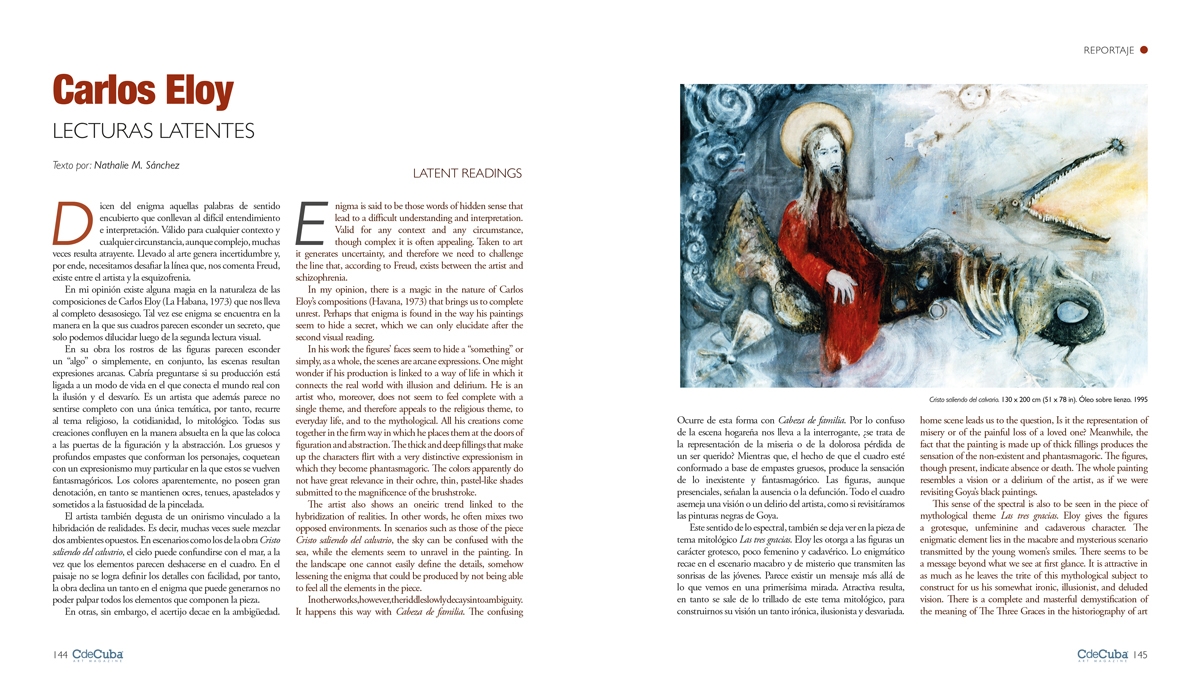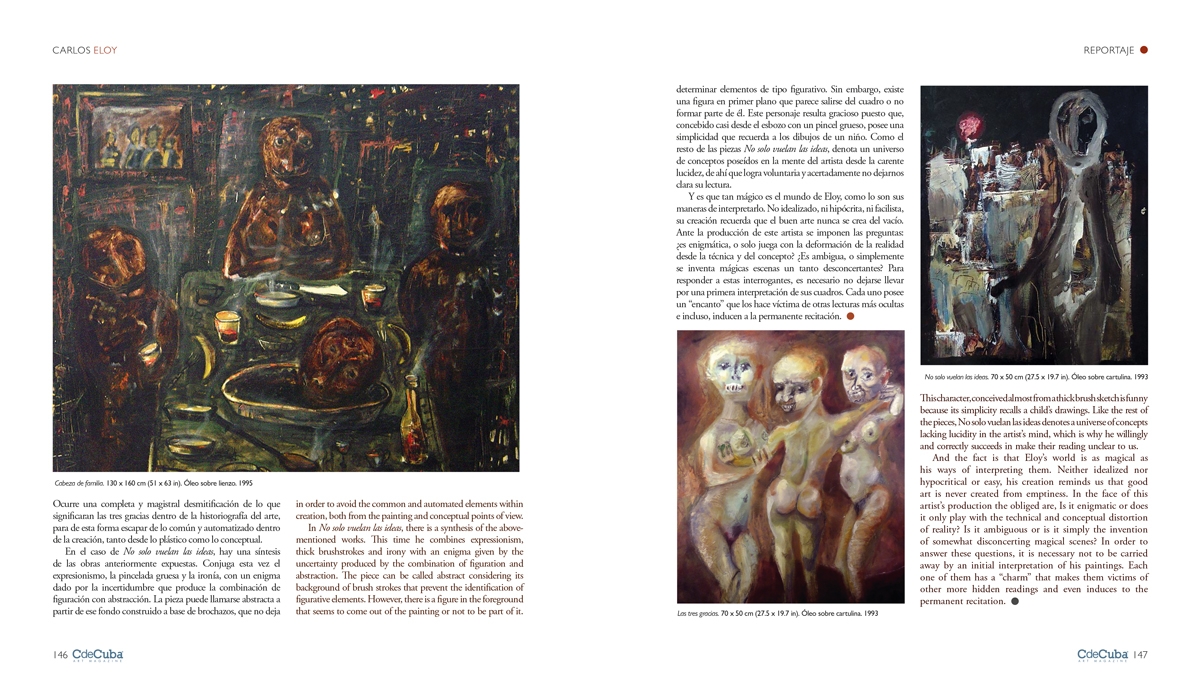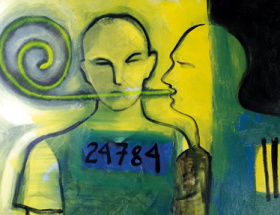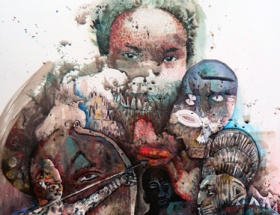Latent Readings
By Nathalie M. Sánchez
Enigma is said to be those words of hidden sense that lead to a difficult understanding and interpretation. Valid for any context and any circumstance, though complex it is often appealing. Taken to art it generates uncertainty, and therefore we need to challenge the line that, according to Freud, exists between the artist and schizophrenia.
In my opinion, there is a magic in the nature of Carlos Eloy’s compositions (Havana, 1973) that brings us to complete unrest. Perhaps that enigma is found in the way his paintings seem to hide a secret, which we can only elucidate after the second visual reading.
In his work the figures’ faces seem to hide a “something” or simply, as a whole, the scenes are arcane expressions. One might wonder if his production is linked to a way of life in which it connects the real world with illusion and delirium. He is an artist who, moreover, does not seem to feel complete with a single theme, and therefore appeals to the religious theme, to everyday life, and to the mythological. All his creations come together in the firm way in which he places them at the doors of figuration and abstraction. The thick and deep fillings that make up the characters flirt with a very distinctive expressionism in which they become phantasmagoric. The colors apparently do not have great relevance in their ochre, thin, pastel-like shades submitted to the magnificence of the brushstroke.

The artist also shows an oneiric trend linked to the hybridization of realities. In other words, he often mixes two opposed environments. In scenarios such as those of the piece Cristo saliendo del calvario, the sky can be confused with the sea, while the elements seem to unravel in the painting. In the landscape one cannot easily define the details, somehow lessening the enigma that could be produced by not being able to feel all the elements in the piece.
In other works, however, the riddle slowly decays into ambiguity. It happens this way with Cabeza de familia. The confusing home scene leads us to the question, Is it the representation of misery or of the painful loss of a loved one? Meanwhile, the fact that the painting is made up of thick fillings produces the sensation of the non-existent and phantasmagoric. The figures, though present, indicate absence or death. The whole painting resembles a vision or a delirium of the artist, as if we were revisiting Goya’s black paintings.
This sense of the spectral is also to be seen in the piece of mythological theme Las tres gracias. Eloy gives the figures a grotesque, unfeminine and cadaverous character. The enigmatic element lies in the macabre and mysterious scenario transmitted by the young women’s smiles. There seems to be a message beyond what we see at first glance. It is attractive in as much as he leaves the trite of this mythological subject to construct for us his somewhat ironic, illusionist, and deluded vision. There is a complete and masterful demystification of the meaning of The Three Graces in the historiography of art in order to avoid the common and automated elements within creation, both from the painting and conceptual points of view.
In No solo vuelan las ideas, there is a synthesis of the above-mentioned works. This time he combines expressionism, thick brushstrokes and irony with an enigma given by the uncertainty produced by the combination of figuration and abstraction. The piece can be called abstract considering its background of brush strokes that prevent the identification of figurative elements. However, there is a figure in the foreground that seems to come out of the painting or not to be part of it. This character, conceived almost from a thick brush sketch is funny because its simplicity recalls a child’s drawings. Like the rest of the pieces, No solo vuelan las ideas denotes a universe of concepts lacking lucidity in the artist’s mind, which is why he willingly and correctly succeeds in make their reading unclear to us.
And the fact is that Eloy’s world is as magical as his ways of interpreting them. Neither idealized nor hypocritical or easy, his creation reminds us that good art is never created from emptiness. In the face of this artist’s production the obliged are, Is it enigmatic or does it only play with the technical and conceptual distortion of reality? Is it ambiguous or is it simply the invention of somewhat disconcerting magical scenes? In order to answer these questions, it is necessary not to be carried away by an initial interpretation of his paintings. Each one of them has a “charm” that makes them victims of other more hidden readings and even induces to the permanent recitation.





